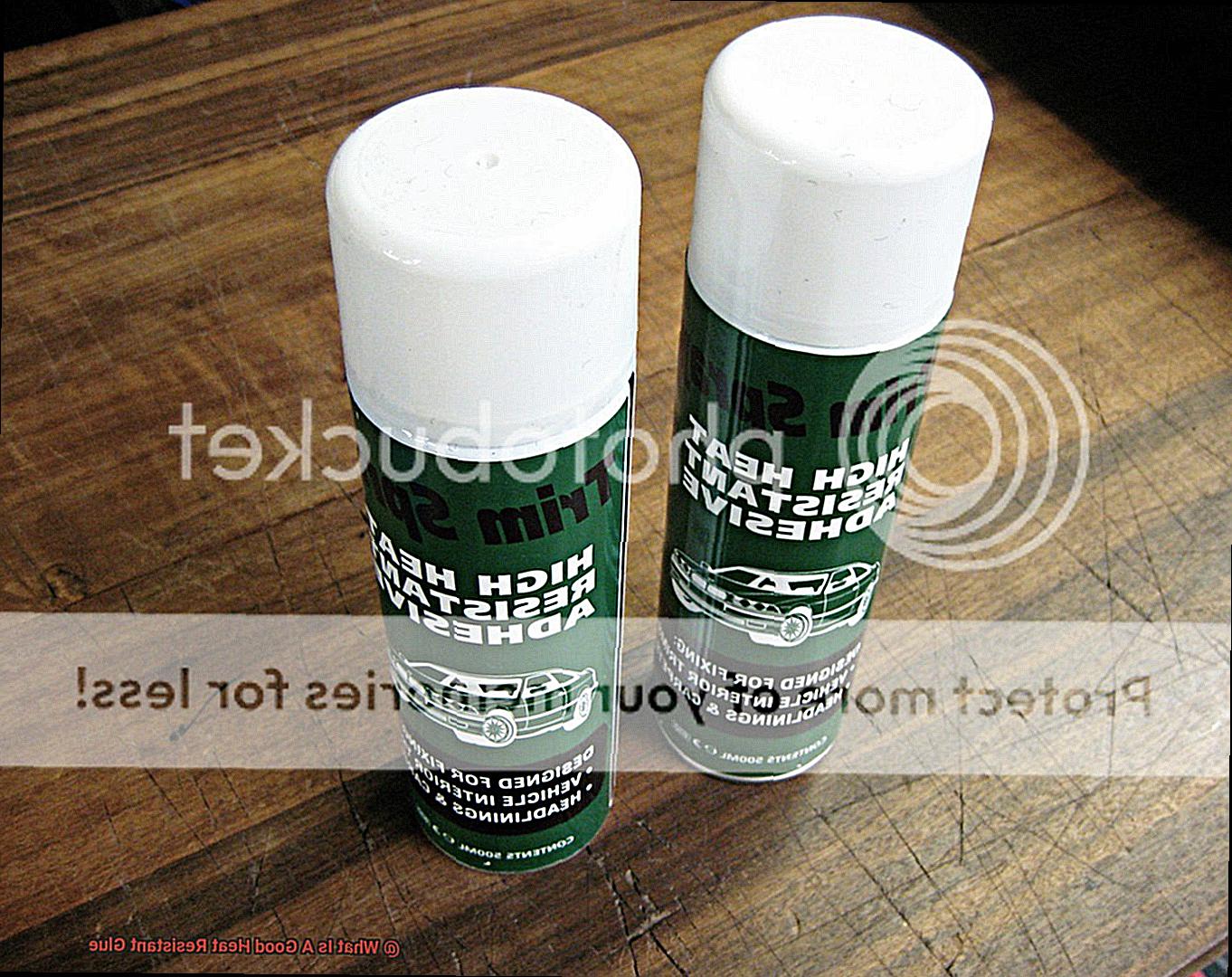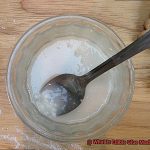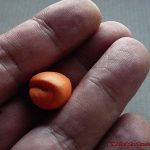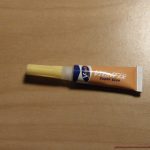Looking for an adhesive solution that can handle the heat? Well, you’ve landed in the right place. We all know how frustrating it can be when your glue melts away under high temperatures, leaving your DIY project in shambles. That’s why a good heat-resistant glue is an absolute game-changer. Whether you’re a casual DIY enthusiast or a seasoned professional, this glue is the secret weapon you need to tackle any project that requires withstanding scorching heat.
From fixing a cracked ceramic pot to securing delicate electronic components, a reliable heat-resistant glue has got your back. No more worrying about your car engine’s metal parts coming loose or those pesky repairs around the house falling apart due to extreme temperatures. With this magical adhesive by your side, you can say goodbye to stress and hello to long-lasting results.
In this blog post, we’ll dive into the world of heat-resistant glue and explore its multiple uses across various applications. Get ready to discover its unrivaled reliability and durability, ensuring that your projects not only survive but thrive through the test of time. So buckle up and get ready to become a glue guru because we’re about to unveil the best-kept secret of adhesive solutions.
Temperature Resistance
Contents
When it comes to high-temperature applications, finding the right glue is a burning challenge. That’s where temperature resistance steps in – the superpower that keeps heat resistant glues intact even in scorching conditions. In this blog post, we’ll dive into the importance of temperature resistance in heat resistant glues and explore some sizzling options that can handle the heat with ease.
The Crucial Role of Temperature Resistance:
Imagine a glue that crumbles under extreme heat – a recipe for disaster, right? Temperature resistance is the secret ingredient that ensures a glue can withstand blistering temperatures without compromising its adhesive properties or bond strength. It’s the guardian angel that keeps things sticking even when the mercury rises.
Tailoring to the Heat:
Different applications demand different levels of temperature resistance. Picking a glue that matches the specific temperature range it will face is key. The automotive and aerospace industries, for instance, require glues that laugh in the face of temperatures above 500°F (260°C) or even higher.
The Mighty Silicone-based Adhesives:
For those seeking true heat warriors, silicone-based adhesives are here to save the day. These champions can endure temperatures ranging from a chilling -40°F (-40°C) to an astonishing over 600°F (315°C). Their versatility makes them stars in sealing and bonding applications in industrial settings.
Enter the Epoxy Resin Adhesives:
When stability in high temperatures is paramount, epoxy resin adhesives shine bright. Withstanding temperatures up to approximately 300°F (150°C), they find their home in electronics and automotive industries, where things can get steamy.
The Versatility of Polyurethane Adhesives:
Polyurethane adhesives are not ones to shy away from the heat. With temperature resistance ranging from a frigid -40°F (-40°C) to a toasty 250°F (121°C), they can handle a variety of tasks. From construction to automotive and woodworking, these adaptable adhesives are up for any challenge.
Substrate Compatibility
When it comes to heat-resistant glue, finding one that is compatible with your substrate is vital for a strong and durable bond. Not all glues are created equal, and using the wrong one can lead to weak or failed connections. So, before you dive into your next project, let’s embark on a journey to explore the factors that make substrate compatibility the key to adhesive success in scorching conditions.

Temperature Resistance:
The first factor to consider is the temperature resistance of your substrate.
Different materials have different melting points, and you need a glue that won’t buckle under heat. Enter silicone-based adhesives, the superheroes of extreme temperatures.
With the ability to withstand everything from bone-chilling -40°F (-40°C) to blazing hot 600°F (315°C), they are perfect for industrial applications.
But don’t count out epoxy resin adhesives, known for their stability at around 300°F (150°C), making them ideal for electronics and automotive industries. And let’s not forget about polyurethane adhesives, offering versatility with a temperature resistance range of -40°F (-40°C) to 250°F (121°C).
Surface Properties:
Now let’s get up close and personal with the surface properties of your substrate. Smooth surfaces require glues with Herculean adhesion properties, while porous or uneven surfaces demand gap-filling glues with supernatural skills. Lucky for you, there are specialized glues available for metals, plastics, wood, and more, ensuring that no matter the material, you can create a bond that would make even the toughest critic nod in approval.
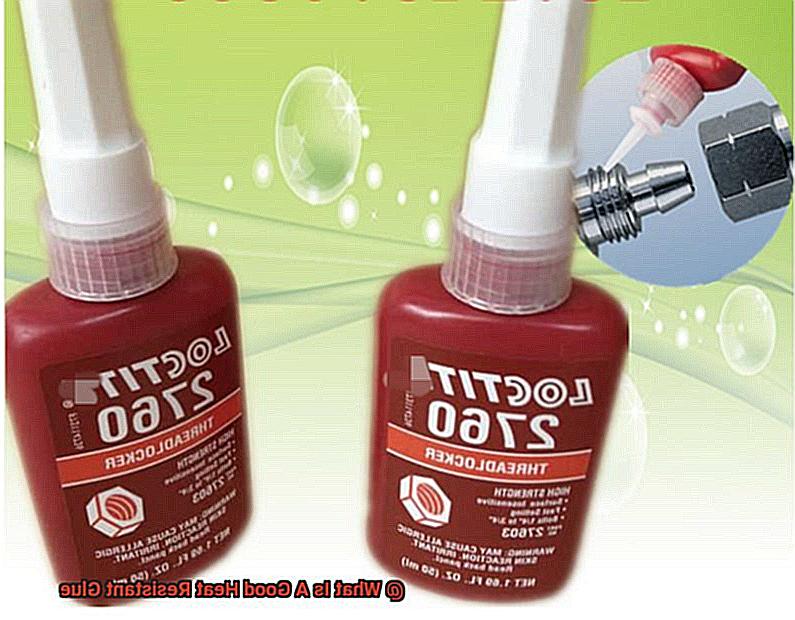
Chemical Compatibility:
But beware. We mustn’t forget about chemical compatibility between glue and substrate. Certain glues have a volatile relationship with specific materials, resulting in weakened bonds or even disastrous damage. To avoid this nightmare, consult the manufacturer’s guidelines or conduct compatibility tests to ensure a perfect match made in adhesive heaven.
Intended Application and Environmental Conditions:
Now, let’s imagine the incredible feats your bonded assembly will face in its lifetime. Will it brave the elements, endure moisture, or withstand extreme temperatures? If so, you need a glue with superpowers in resistance to these environmental challenges. Enter silicone-based adhesives once again, shining bright in outdoor applications and high humidity environments due to their unmatched moisture and temperature resistance.
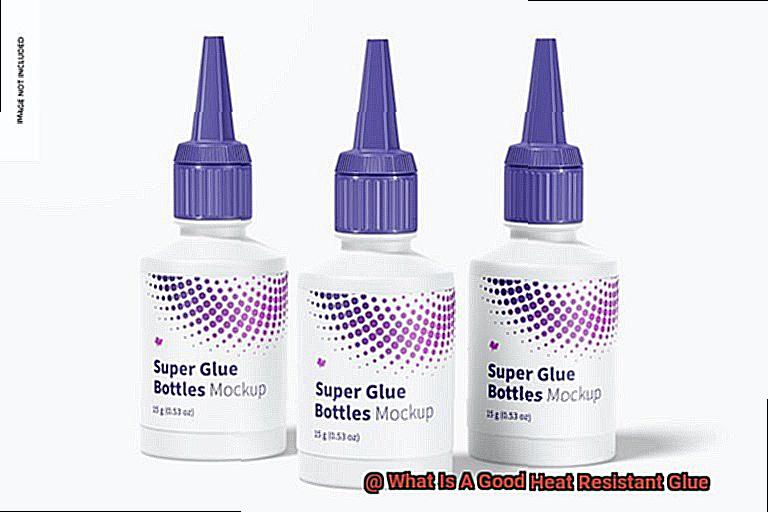
Strength
Strength is the superhero of heat resistant glue, swooping in to save the day by keeping materials firmly bonded together, even when faced with scorching temperatures. It’s the glue’s superpower, the force required to break the adhesive bond between two surfaces. So why is strength so important? Let’s break it down into a couple of key points.
First, there’s bond strength. Think of it as the glue’s mighty grip. A good heat resistant glue should have a high bond strength, ensuring that your materials stay securely attached, no matter how much heat they encounter.
Then, there’s cohesive strength – the adhesive’s own flexing muscles. Cohesive strength refers to the internal strength or integrity of the glue. You want a glue with high cohesive strength because it means it won’t break down or degrade when exposed to those sizzling temperatures.
But hold on, there’s more. Different materials require different levels of adhesive strength. Bonding metal surfaces may need a stronger glue compared to plastic or wood. So choose a heat resistant glue that matches the material and application you’re working with.
And here’s an extra tip: consider the duration and intensity of heat exposure your glued materials will endure. Some glues may handle high temperatures like champs but might not be suitable for prolonged heat exposure. So select a glue that can withstand the specific heat conditions it’ll face.
Flexibility
When it comes to heat-resistant glue, there is one characteristic that stands out as a true superhero – flexibility. In this blog post, we will explore why flexibility is a key factor to consider when selecting a heat-resistant glue. We’ll delve into how it affects bond integrity, adhesion strength, and overall performance. So, let’s dive in and discover the power of flexibility.
Accommodating Movement:
A good heat-resistant glue should be able to handle the expansion and contraction of bonded materials caused by temperature changes. Flexibility allows the glue to absorb stress and maintain the bond’s integrity, preventing cracks or breaks. Think of it as the glue’s ability to be elastic, bending and stretching with the materials it holds together.
Long-Term Flexibility:
Not all glues can withstand prolonged exposure to high temperatures while maintaining their flexibility. It’s important to choose a heat-resistant glue that won’t become stiff over time, losing its ability to absorb movement. Remember, flexibility should be a consistent quality that lasts throughout the life of your project.
Adhesion Strength:
Flexibility also plays a role in the strength of the bond. Rigid glues may struggle to conform to irregular surfaces, resulting in weak adhesion. On the contrary, a flexible glue can adapt to surface variations, providing stronger and more reliable bonds. It’s like having a glue that molds itself perfectly to any shape or contour.
Consider Other Factors:
While flexibility is crucial, don’t forget about other important aspects such as chemical resistance and material compatibility. Some glues may excel in flexibility but might not be suitable for certain applications due to their chemical composition or limited compatibility with specific materials. Consider these factors along with flexibility when making your selection.
Chemical and Moisture Resistance
Prepare to embark on a captivating journey into the intriguing realm of chemical and moisture resistance.
In your quest for the perfect heat-resistant glue, you require a hero capable of battling against chemicals and moisture with unmatched prowess. Chemical resistance stands as a crucial factor because, let’s be honest, your adhesive may encounter acids, solvents, or oils. Naturally, you don’t want it crumbling under pressure. An exceptional heat-resistant glue should possess the fortitude to stand tall against these chemicals, maintaining its bond and ensuring your surfaces remain steadfastly joined.
Moisture resistance is equally paramount. We all know how water can swiftly weaken bonds, akin to a bullet’s blistering velocity. Thus, imagine laboring on an outdoor project or in a humid environment – you need a heat-resistant glue that won’t surrender to moisture. It must valiantly combat water and humidity, preserving its adhesive strength even as dampness threatens to infiltrate.
To obtain these extraordinary superpowers, heat-resistant glues are meticulously formulated with special ingredients. Some are fortified with chemical-resistant polymers or resins acting as impenetrable shields against harsh chemicals. Others incorporate moisture-resistant agents that erect barriers thwarting water’s treacherous infiltration. These additives elevate the glue’s performance within chemically-challenged or wet environments.
Nevertheless, remember this: not all glues are forged equal. The degree of chemical and moisture resistance may vary amongst different heat-resistant glues. Consequently, when selecting one for your project, it is vital to consider the specific requirements of your application. It is akin to discovering the ideal sidekick – one who matches your needs and possesses the capacity to surmount any obstacle encountered.
Silicone-based Glues
Silicone-based glues are the superheroes of the adhesive world, capable of withstanding extreme temperatures and harsh conditions. These glues possess a range of superpowers that make them ideal for applications requiring heat resistance.
First and foremost, silicone-based glues excel in heat resistance. Picture a glue that remains strong and adhesive even when faced with scorching temperatures. These glues can handle the heat like no other, enduring temperatures from -60°C to 300°C (-76°F to 572°F). Whether you’re working on an automotive project, electronic device, or construction application, these glues can handle the heat without breaking a sweat.
But their powers don’t stop there. Silicone-based glues also offer remarkable flexibility and elasticity, allowing them to absorb vibrations and movements without losing their bond strength. This means that even in applications where thermal expansion and contraction occur, silicone-based glues won’t crack or break under pressure. They’ll keep your surfaces securely joined, no matter what.
Another impressive feature of silicone-based glues is their chemical resistance. They fearlessly brave solvents, oils, and other harsh chemicals without compromising their adhesive properties. This makes them perfect for environments where exposure to chemicals is expected, ensuring that your bonds remain intact and reliable.
Silicone-based glues come in various forms, including liquids, sealants, gels, and tapes. You can choose the form that suits your project’s requirements and apply them using methods like brushing, spraying, or dispensing from a tube or cartridge. Their versatility knows no bounds.
However, it’s important to note that bond strength may vary depending on the materials being bonded. To ensure optimal performance, it’s always recommended to test the glue on a small sample before committing to a larger project.
Epoxy-based Glues
Epoxy-based glues are the unsung heroes of adhesives, renowned for their ability to handle the heat. These glues are like a shield against high temperatures, making them the go-to choice for applications that require resilience and durability.
What sets epoxy-based glues apart is their unique composition. They are made by combining two components – a resin and a hardener. When these components mix, they undergo a magical transformation, a chemical reaction that creates an adhesive with exceptional strength and endurance.
The true power of epoxy-based glues lies in their remarkable heat resistance. They can endure temperatures ranging from -40°C to over 150°C (-40°F to over 300°F), making them impervious to scorching environments and temperature fluctuations without sacrificing bond strength.
Their secret lies in the cross-linking reaction that occurs during the curing process. As the resin and hardener react, they form a three-dimensional network of robust chemical bonds. This network allows the adhesive to expand and contract seamlessly with temperature changes while maintaining its incredible bond strength.
But it doesn’t stop there – epoxy-based glues have more tricks up their sleeve. They also offer superb chemical resistance, making them ideal for applications in harsh chemical environments at elevated temperatures. These glues can withstand solvents, oils, and acids, ensuring they remain unbreakable even in the face of adversity.
However, not all epoxy-based glues are created equal when it comes to heat resistance. The specific formulation and composition play a crucial role in their performance in high-temperature applications. It’s important to choose an epoxy glue specifically designed for heat resistance to ensure a strong bond in hot conditions.
To unleash the full potential of epoxy-based glues in heat-resistant applications, it’s essential to follow the manufacturer’s instructions diligently. Proper surface preparation and application techniques are vital for achieving optimal bond strength and thermal performance. Take into consideration factors such as cure time, flexibility, and compatibility with the materials being bonded for the best results.
Cyanoacrylate Glues (Super Glues)
In a world full of sticky situations, where time is of the essence, one adhesive stands above the rest – cyanoacrylate glues, also known as super glues. These remarkable adhesives possess lightning-fast bonding abilities and a range of other properties that make them a go-to solution for various bonding needs. In this article, we’ll delve into the exciting world of super glues, focusing on their heat resistance and how they can be used effectively in different applications.
The Fast and Furious Bonding Power:
Forget about waiting around for hours for your adhesive to set – cyanoacrylate glues work at lightning speed. When these glues come into contact with moisture, whether it’s the humidity in the air or the moisture on your skin, a chemical reaction called polymerization occurs. This rapid process creates strong chemical bonds that form an incredibly durable and secure bond in just seconds. So whether you’re fixing a broken mug or attaching small parts together, super glues have got your back.
Tolerating the Heat:
While cyanoacrylate glues are not known for their high heat resistance, they still hold up well under moderate temperatures. These glues can typically withstand temperatures up to 180 degrees Fahrenheit (82 degrees Celsius) before their bond begins to weaken. However, it’s important to keep in mind that the heat resistance may vary depending on the specific brand and formulation of the glue.
Taking it Up a Notch:
But what about those challenging projects that demand more heat resistance? Fear not. The market offers high-temperature variants of cyanoacrylate glues that can handle even higher temperatures. These specialized super glues are formulated with additives that enhance their ability to endure temperatures ranging from 300 to 400 degrees Fahrenheit (149 to 204 degrees Celsius). With these high-temperature super glues, you can confidently tackle projects that demand a little extra heat resistance.
Applications that Pack a Heat Punch:
Now that we know about the heat resistance properties of super glues, let’s explore some exciting applications where they can truly shine:
- Automotive Repairs: Whether you need to bond plastic trims or metal brackets that may be exposed to moderate temperatures under the hood, super glues have you covered.
- Electronics Assembly: In the world of electronics, where components generate heat, super glues come to the rescue. They securely bond small electronic parts while providing good resistance to the heat generated by circuitry.
- Crafting and DIY Projects: From jewelry-making to model-building, super glues are fantastic for bonding materials like wood, metal, plastic, and even fabric in projects that don’t require extreme heat resistance.
mLayFRQ7jdo” >
Also Read: Krazy Glue – Glue Things
Conclusion
In conclusion, the search for a reliable heat-resistant glue is paramount when undertaking projects that involve high temperatures. Whether you’re fixing up your car, assembling electronics, or engaging in crafting and DIY endeavors, having an adhesive that can withstand intense heat is absolutely essential.
When selecting a heat-resistant glue, temperature resistance stands as a critical factor to consider. Different applications demand varying levels of resistance, making it crucial to match the glue with the specific temperature range it will encounter. For extreme temperatures, silicone-based adhesives are unparalleled, enduring ranges from -40°F (-40°C) to over 600°F (315°C). Epoxy resin adhesives offer exceptional stability in high temperatures of up to approximately 300°F (150°C), while polyurethane adhesives provide versatility with a range spanning from -40°F (-40°C) to 250°F (121°C).
Another vital consideration lies in substrate compatibility. Not all glues are compatible with every material, necessitating careful selection based on your substrate. Smooth surfaces require robust adhesion properties, whereas porous or uneven surfaces call for gap-filling glues. Furthermore, taking into account chemical compatibility and intended application/environmental conditions plays a pivotal role in achieving successful bonding.
Strength and flexibility also hold significant weight when determining the quality of a heat-resistant glue. The bond strength must be sufficiently robust to keep materials securely attached under high temperatures, while cohesive strength ensures the adhesive won’t deteriorate over time. Flexibility allows the glue to accommodate movement and thermal expansion/contraction without succumbing to cracks or breakage.
Lastly, chemical and moisture resistance serve as vital attributes for long-lasting bonds in challenging environments. Silicone-based glues excel in both these areas by withstanding harsh chemicals and resisting moisture infiltration. Epoxy-based glues also boast exceptional chemical resistance.
All things considered, silicone-based glues, epoxy-based glues, and cyanoacrylate glues (super glues) all emerge as outstanding options for heat-resistant applications. Each possesses its own unique properties and strengths, making it imperative to choose the one that best suits your specific project.

